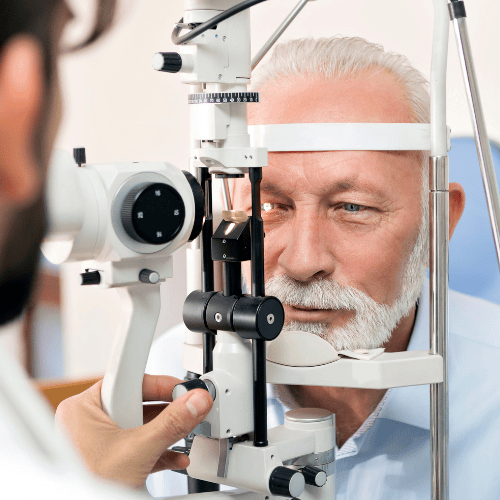DRY EYES: ARE YOU AT RISK?

Our ocular surface requires a healthy tear film to protect us from infection, wash away dust and irritants, and provide clear vision. Dry eye disease occurs when there is a deficiency in quantity or quality of our tear film.
What are some common dry eye disease risk factors?
1) Environment: Our dry Alberta climate is a significant contributor to dry eye disease, especially in winter time. Wind and smoke are also common irritants.
2) Improper blinking: Our blink rate reduces when looking at the computer, tablet, or phone screen. Furthermore, some people have an incomplete blink and don’t entirely re-wet the ocular surface.
3) Systemic health : Dry eye disease is often associated with auto-immune conditions like rheumatoid arthritis, thyroid problems, and diabetes.
4) Medications: Common daily medications such as antihistamines, oral contraceptives, blood pressure pills, and antidepressants can also change the tear film.
5) Age and gender : Tear quality worsens as we age. Hormones also play a large role in tear production and women are more likely to be affected, especially during pregnancy and menopause.
5) Blepharitis: Eyelid inflammation due to buildup of bacterial bio-films on the eyelids is a very common contributor to poor quality of tear film.
6) Ocular surgery: Cataract surgery, laser refractive surgery, and other procedures can temporarily worsen our tear production.
As the list demonstrates, dry eye disease is associated with many factors and affects most of us to varying degrees of severity. If left untreated, common symptoms of dry eyes include burning, grittiness, foreign body sensation (Feels like something is in the eye), blurry vision, excessive tearing, and contact lens intolerance. Symptoms can range from mild discomfort to debilitating loss of quality of life. Therefore, it is important to be proactive in our eye care and take steps to prevent symptoms before they start.
Our doctors have a special interest in treating dry eye disease. to book an appointment and take the first step towards dry eye relief.
-Dr. Lana Filipic











